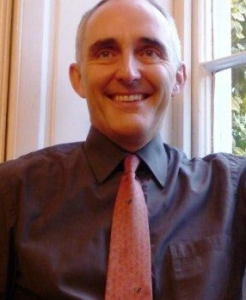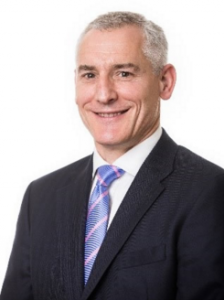March 2016

The Biggest Challenges To Deliver A New GP Surgery?
To provide a high quality GP service, the importance of fit for purpose premises is integral.
The challenges are more relevant than ever and the provision of GP services within poor quality premises is not beneficial and uplifting within the communities they serve is a very real problem.
The Royal College of General Practitioners (RCGP), within their ‘Vision for General Practice In The Future’ report highlighted a vision for the general practice in 2022. Key areas included: high quality, healthcare services available for all communities; investment in suitable community based premises for delivering care, teaching, training and research and greater use of information and technology to improve health and care.
Whilst important to look at what the future has in store, lets look at the issues that are pertinent today.
The Issues Today For A New GP Surgery
What are the challenges that GPs face today to deliver new surgeries?
It is fair to say that there is a requirement for additional investment to respond to the increasing requirement for general practice services and to support the continual development that patients need within their communities.
From a Jerrard Keats & Wolley perspective, the NHS provides a mechanism to slow things down.
For every proposal to deliver a new space to deliver primary care, the NHS requires an initial and then full business case documented and presented. However, GPs and the NHS, CCGs, local area teams and LMC all know exactly what they will be delivering and what is expected from their practice. Creating a business case takes time and can become a costly process working with consultants to produce a proposal that is created for no one to read and acknowledge.
We are currently living through a rationing process with the NHS that is stopping the release of revenue funding to deliver the finance to allow the creation of fit for purpose premises that GPs need to serve the population that pay for them.
GPs are committed to work with what they have but no one disputes the fact that better patient environments provide a healthier workforce. The challenge is for the government to release the funds for the provision of necessary space.
The Voices Of Others
Rather than being a perspective from just Jerrard, Keats & Wolley, we also asked for the thoughts of those within our medical development community.
These are people whom we have worked with over the years to facilitate others.
 Philip Proctor, from chartered architects Proctor Watts Cole Rutter, has been involved in over 130 new surgery projects acknowledges. He recognises the difficulty in new projects coming to life. Here are the challenges from an architectural viewpoint.
Philip Proctor, from chartered architects Proctor Watts Cole Rutter, has been involved in over 130 new surgery projects acknowledges. He recognises the difficulty in new projects coming to life. Here are the challenges from an architectural viewpoint.
“The biggest challenge is that CCGs are not authorising the finance, and without that nobody can proceed.”
“Many practices are now in financial difficulty.”
“They may have built a building 20 or so years ago, which should be paid for by now on an amortised loan.
“However accountants frequently recommended only paying interest, leaving the GPs with a 20-year old, dated building and a debt which may well exceed the current value of the building, so the practice is unable to move. This means younger GPs may not be interested in buying into the building, and perhaps not even into the practice.”
“GP buildings need to be financed over a 20-year loan repayment period, but increasingly NHS contracts are only for five years which is not sufficient to support a finance loan.”
“From an architectural perspective, our biggest concern is BREEAM (Building Research Establishment Environmental Assessment Methodology). This adds further costs to already challenging projects.”
“A building on a polluted urban site with no plants or wildlife, near buses and trains, with no car parking in a quiet area, with no air pollution could score excellent even if the building has mediocre insulation or energy efficiency!”
“Working in a rural area, which is the opposite of the above description means that to score excellent we have huge costs to gain points. To gain points means installing complicated energy systems which will be expensive to maintain, and likely to breakdown due to their complexities.”
“We should be adhering to the old adage of “Long life, Loose fit, Low energy” and I would add “Building for zero carbon in use” which would be a simple assessment, leading to systems that are simple to maintain.”
The Challenges Are Varied, But Can Be Addressed
Continuing the challenges, we also spoke to Ben Willis, partner from law firm, Veale Wasbrough Vizards.
 “I have been involved in approximately 100 GP surgery developments. Whilst there are consistent themes, it strikes me how what should be similar projects can be so different. Here are the main challenges.”
“I have been involved in approximately 100 GP surgery developments. Whilst there are consistent themes, it strikes me how what should be similar projects can be so different. Here are the main challenges.”
“Firstly, dealing with the NHS is challenging, with the foundation of NHS PS, this can be on more than one front.
“Approaches to funding and approvals can still vary from one region to another and can become slow. This is extremely difficult for GPs to make what are often high value long-term business decisions around financial investment and long term liability. It can sometimes take many years for a project to progress.
“Secondly, GPs are highly intelligent individuals but in most cases have not had to deal with business transactions of the value or legal complexity. This lack of experience means that they need assurance and support throughout a transaction.
“Thirdly, frequently sites are purchased from the NHS or from local authorities or other public bodies and this often makes for a complication land transaction.
“This includes restrictive covenants or overage a common feature. This can complicate the drafting and create a more complex – and expensive – transaction.
“Lastly, many schemes involve numerous third party occupiers and so as well as documenting the “main transaction” it can be necessary to deal with a number of tenants and their lawyers – as well as (on a DIY transaction) – dealing with a bank and its own lawyers.
“When you factor in construction issues, tax and partnership documentation which is also required – and with the NHS is involved as well – it can be challenging to manage the various elements of a transaction to meet the required timescales.”
Lets Look To Conclude
It can be acknowledged that the challenges and issues are varied. There is not one straight answer.
What we can all be clear on is the objective, to provide and deliver GP surgeries that fit in seamlessly within a community and have a key role to play for generations. Expansion and good value for money is not about moving to a new site, but planning now for growth.
The process of getting to that place takes time and commitment, but once acknowledged can benefit neighborhoods and all who is reliant on primary care.
The issues today are apparent, investment in the fabric for primary care delivery has to be acknowledged. To talk in more detail and to listen to your desires for your surgery development and plan for your future, contact Jon on 01202 744990 or email jon@jkwproperty.co.uk
